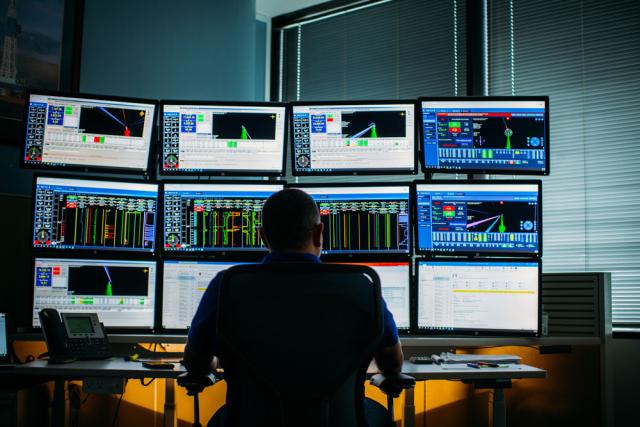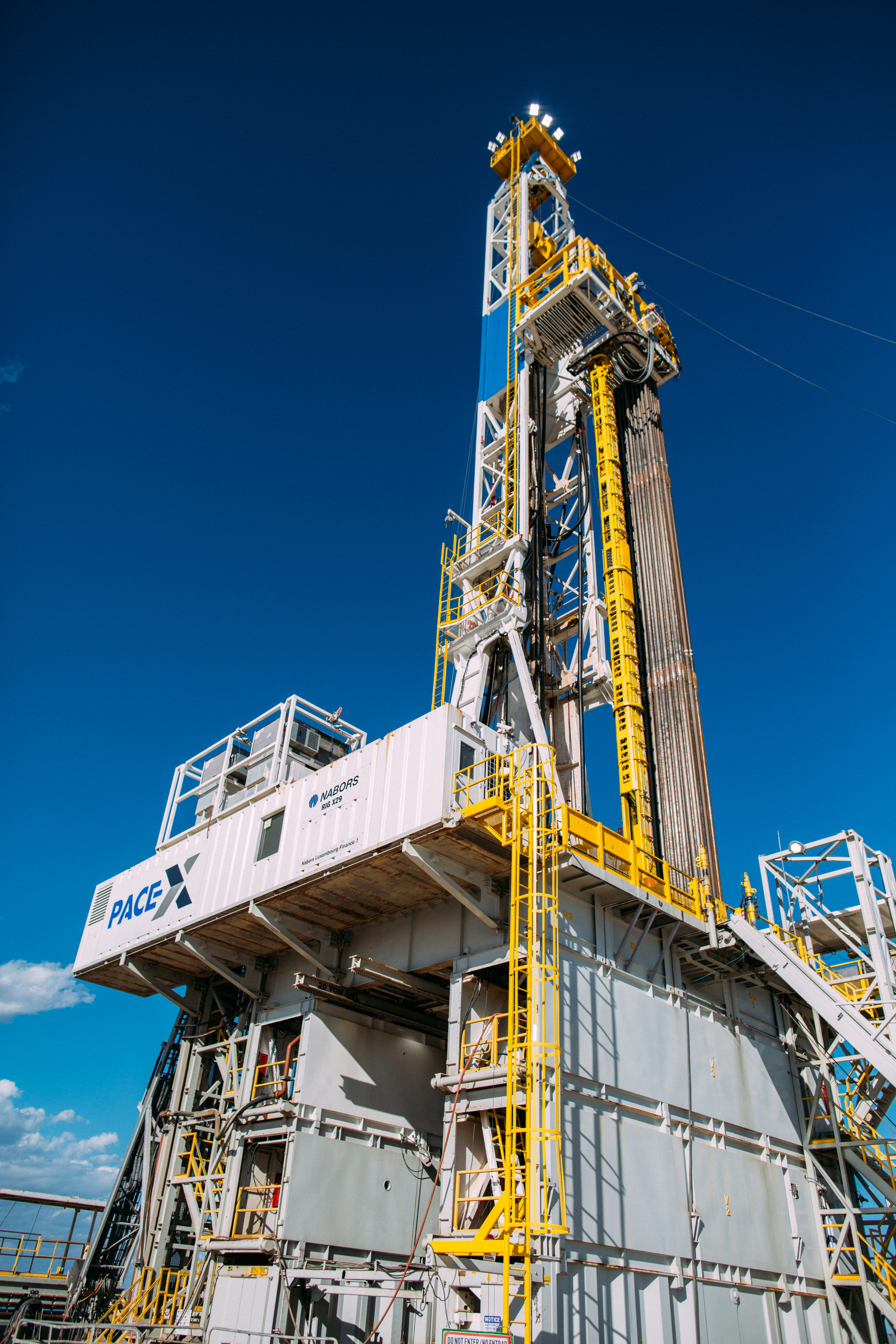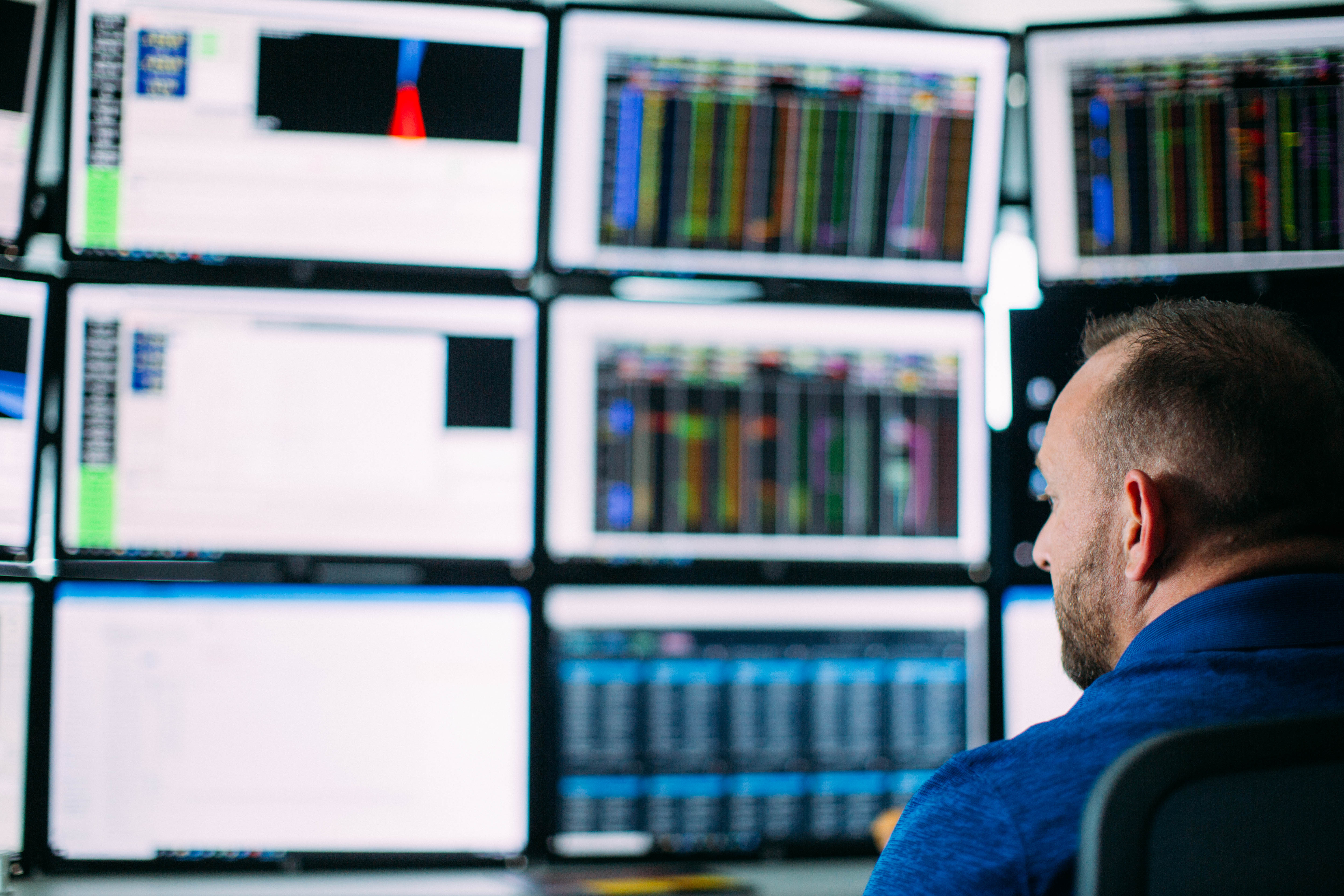
Nabors’ recent purchase of MindMesh lets the drilling giant leverage digital twin technology to smooth wellsite operations and to develop new equipment, software and procedures. (Source: Nabors)
Drilling giant Nabors’ recent purchase of digital twin company MindMesh was motivated by improving efficiencies and, in the drilling industry vernacular, “getting to bottom faster.”
Nabors also had a history with the company, having worked extensively with MindMesh over the past 10 years.
A digital twin is a virtual model designed to accurately reflect a physical object, and many industries use digital twins for planning and simulation, which is what drew Nabors’ interest.
And digital twins, unlike humans, cannot be crushed, burned or suffer broken bones.

Brett Schellenberg, Nabors vice president of digital solutions, said the company aims to remove people from the most dangerous areas of the rig floor.
“We are about the only heavy industrial business that allows our people to hang from 95 to 105 ft over an open space while a rotating piece of equipment runs up at it, and simultaneously have two people that stand underneath that same piece of equipment,” he said. “When you realize that, you see it’s 2023, and we as an industry haven’t already made significant strides to try to change that.”
He said Nabors is trying to move people out of harm’s way from dropped objects, heavy equipment and rotating equipment, while also automating tasks.
“I think most can agree that that’s a worthwhile effort,” he said.
‘Robots don’t have eyes’
Other industries, such as the manufacturing sector, have already generally automated some of their most dangerous and repetitive tasks. Choregraphing oil and gas drilling is different.
In manufacturing water bottles, for example, thousands of bottles go through the system daily the same way for years.
But oil and gas drilling is rarely so predictable. Equipment —a new bottom hole assembly, a rotating head installation or a pipe rack — comes and goes throughout the process. That constant change makes it impossible to set one program and let it run forever.
Using digital twins in the planning stage can help teach robots how to operate smoothly and efficiently across the entire drilling process.
“We have in recent years been very interested in modeling and simulation, both above ground and below ground,” Schellenberg said.
Digital twin modeling is important for robotics planning because there are almost endless possible combinations of rigs and equipment. In such an environment, automation system design must take each component into account at every location. With the MindMesh digital twin, planners can aggregate those components, test a number of possible configurations and predict how they will work together and how robots can work around them.
It’s about vision, both in planning and in daily operation.
“These robots don’t have eyes,” Schellenberg said. “So you need to have some sort of digital model or simulation to tell this equipment how it can appropriately move through that space.”
Real-time monitoring also empowers on-the-fly adjustments.
“Rather than an engineer just putting in some configurations before hitting ‘go’ and sending it to the rig, now the system is constantly updating with the new information it has,” he adds.
Getting to the bottom faster
Nabors uses 3D models in three areas: underground, on the rig floor and for various pieces of machinery and equipment around the rig site, such as pumps, engines and mud tanks.
“When you take those three components and combine them together, I think that’s the ultimate goal of having a robust visible digital twin for our customers’ rigs,” Schellenberg said.
While safety is important, drillers also want to get to bottom more efficiently.
Schellenberg says one of the biggest issues in lost time is in tripping, or removing and replacing drill pipe from the well to change a bit or another piece of the drill string. Such failures can occur if the driller goes back to the bottom the wrong way.
Even with automation, the return-to-bottom procedures are often based on best practices, which are of some value. But they may not take into account all possible variables. Digital twin modeling and real-time monitoring can make appropriate adjustments along the way to prevent delays due to damage or repairs.
Nabors already has two fully automated rigs in use, the R801, deployed about two years ago and the X29, put in use in the fall of 2022.
“For both of those rigs, in order to scale them, really robust simulation and modeling are required,” he said.

Building a better rig
Using a digital twin can help engineers plan for the rig floor as it exists in each case. But could it go further and actually create an ideal work space? Schellenberg says yes —but there’s a catch: cost.
Designing a new rig would involve an investment of $30 million to $40 million, which is not currently practical.
“The solution we must provide them is less capital intensive, which maximizes value to them, using existing equipment and rigs,” he said.
For now, one of Nabors' best options is a digital twin.
Recommended Reading
Woodside Reports Record Q3 Production, Narrows Guidance for 2024
2024-10-17 - Australia’s Woodside Energy reported record production of 577,000 boe/d in the third quarter of 2024, an 18% increase due to the start of the Sangomar project offshore Senegal. The Aussie company has narrowed its production guidance for 2024 as a result.
ConocoPhillips Hits Permian, Eagle Ford Records as Marathon Closing Nears
2024-11-01 - ConocoPhillips anticipates closing its $17.1 billion acquisition of Marathon Oil before year-end, adding assets in the Eagle Ford, the Bakken and the Permian Basin.
SLB Earnings Rise, But Weakened 4Q and 2025 Ahead Due to Oil Glut
2024-10-22 - SLB, like Liberty Energy, revised guidance lower for the coming months, analysts said, as oilfield service companies grapple with concerns over an oversupplied global oil market.
Sheffield: E&Ps’ Capital Starvation Not All Bad, But M&A Needs Work
2024-10-04 - Bryan Sheffield, managing partner of Formentera Partners and founder of Parsley Energy, discussed E&P capital, M&A barriers and how longer laterals could spur a “growth mode” at Hart Energy’s Energy Capital Conference.
BP Profit Falls On Weak Oil Prices, May Slow Share Buybacks
2024-10-30 - Despite a drop in profit due to weak oil prices, BP reported strong results from its U.S. shale segment and new momentum in the Gulf of Mexico.
Comments
Add new comment
This conversation is moderated according to Hart Energy community rules. Please read the rules before joining the discussion. If you’re experiencing any technical problems, please contact our customer care team.





